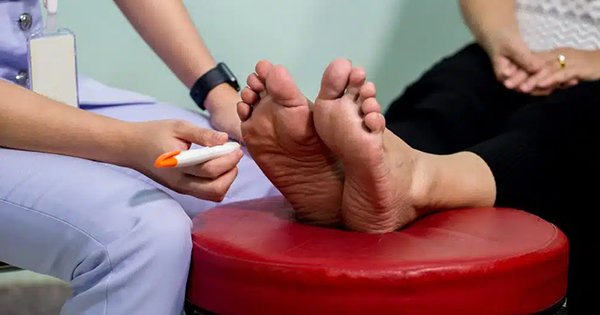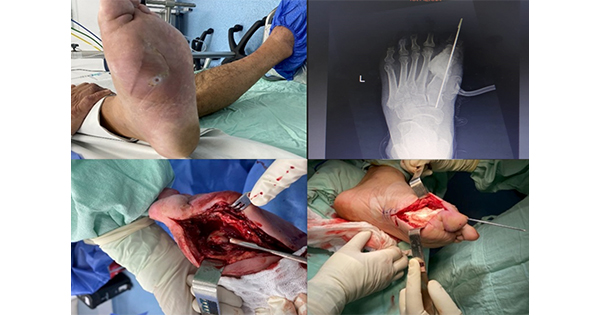In 2015, it was estimated that sepsis claimed 31,000 lives and cost the NHS approximately £2billion; Following these figures, it was suggested that 11,000 lives and £160 million could be saved, through better diagnosis and treatment (Esteban et al, 2007; NHS England, 2015). These estimates were conservative, and it is now believed there are around 123,000 cases of sepsis in England every year with a mortality circa 37,000 (a noted increase from 2015) (NHS England, 2017); this is a comparable mortality of that associated with stroke and lung cancer, i.e. 35,000–40,000/year (NHS England, 2017).
With over 70% of sepsis cases occurring in the community setting (Esteban et al, 2007; NHS England, 2015), more needs to be done to tackle the condition in this area. In January 2015, the government launched the first national action plan to tackle sepsis across England (Department of Health and Society, 2015) and an all-party parliamentary group was established (All Party Parliamentary Group on Sepsis, 2017). These plans were, in part, a response to the tragic death of 5-year-old Sam Morrish (Parliamentary and Health Service Ombudsman, 2017). The National Confidential Enquiry into Patient Outcome and Death found that in multiple cases, a diagnosis of sepsis was delayed as clinicians did not assess and record basic vital signs, and even when sepsis was suspected, still patients did not receive basic interventions that could, in many cases, save lives. This report echoed several of the points raised by the Parliamentary and Health Service Ombudsman (PHSO). First and foremost, this means that healthcare professionals must be supported, equipped and have access to evidence-based guidelines, in-order that they are competently trained in the early identification and prompt treatment of sepsis (NHS England, 2015).
In 2015, the then UK health secretary Jeremy Hunt proposed the following plan to tackle sepsis:
- GPs to audit practice
- New tool kit for GPs to diagnose sepsis in the under 5s
- New diagnosis and incentivised treatment goals for hospitals
- A new electronic tool kit to promote GPs to check for sepsis (started with children under 5 and then rolled out to include adults)
- New NICE guidance
- Public health England to look at the benefits of a new public awareness campaign (Department of Health and Social Care and Public Health England, 2016)
- Support for local health services to recognise sepsis, in addition to the sign up to safety campaign, done in partnership with the UK Sepsis Trust (https://sepsistrust.org/)
- Health Education England to ensure healthcare workers receive training and education on sepsis
- Improved openness through reporting of avoidable harm through new duty of Candour.
These key drivers resulted in the establishment of the cross-system board on sepsis (2016) and they issued a detailed action plan to address the health secretary’s concerns (NHS England, 2015). With the implementation of these plans, at least in part, completed, September 2017 heralded the publication of an updated and revised action plan (NHS England, 2017). Shortly thereafter, the health secretary announced new measures in aiding the assault on sepsis (Department of Health and Social Care, 2017), which included:
- A clear definition of adult sepsis for clinicians so that sepsis can be identified and recorded more quickly
- Educational materials to ensure awareness among all primary care pharmacists and healthcare professionals
- Targeting care homes, pharmacists and other areas of the NHS that deal with frail and older people to prevent sepsis
- A CQUIN associated with sepsis identification.
In response to the health secretary’s plans, the National Institute for Health and Care Excellence (NICE) issued a National guideline [NG51]. NICE proposed that clinicians should:
- Ask the question — could this be sepsis?
- Use a preliminary screening tool
- Use a risk stratification tool for adults, children and young people aged 12 years and over with suspected sepsis that discusses physiological markers
- Acknowledge the difficulty in diagnosing sepsis
- Take into account the patient’s and the patient’s family’s concerns
- Break down communication barriers — taking extra care in assessment where they exist
- Try to identify the source and any risk factors of sepsis, while weighing clinical concerns
- Suspect neutropenic sepsis if the patient is having anti-cancer medication (necessitating immediate referral to a competent clinician)
- Use a structured set of observations that should include temperature (tympanic), heart rate, level of consciousness (including new onset altered behaviour), O2 saturations and systolic blood pressure (clinicians cannot rely on one physiological parameter, such as temperature alone and the patient’s base line should be taken into account)
- Assess for central or peripheral cyanosis (mottled or ashen appearance)
- Assess skin for breaches
- Assess urine frequency (concern if not passed urine in 12–18 hours or 0.5-1 ml/kg/hr if catheterised)
- Refer all outside suspected cases to an acute hospital setting by the most appropriate means, i.e. usually 999 (emergency services)
- Inform and support the patient, their family and the patient’s carers
- Have access to training and education if they are assessing people’s clinical condition, irrespective of their banding, title or role; This should be appropriate, regular and include the identification, assessment, management, risk stratification strategies, local protocols for early treatment including antibiotics and IV fluids, criteria and pathways for escalation in line with their healthcare setting.
The Red Flag Sepsis actions
The Red Flag Sepsis actions are supportive actions advocated by The UK Sepsis Trust (2017) and can be used to ensure the patient is dealt with swiftly, their family are supported and there is consistent parity. These can be seen in (Figure 1) and are:
- If appropriate, immediately call 999 and arrange blue light transfer to hospital/A&E
- State to ambulance services “Red Flag Sepsis”
- Give high flow O2 to maintain O2 saturations above 94% (88–92% in chronic obstructive pulmonary disease (COPD)
- Cannulate if within competencies
- Consider IV fluids if within competencies
- Inform the patients next of kin (If possible with the patient’s consent).
The Sepsis 6
The Sepsis 6 was developed by The UK Sepsis Trust and is a resuscitation bundle based on guidelines developed by the International Surviving Sepsis Campaign (UK Sepsis Trust, 2017). These actions should be initiated within 1 hour of diagnosis and include:
- Giving 02 to keep O2 SATs above 94% (88–92% in COPD)
- Taking blood cultures
- Giving IV antibiotics
- Giving a fluid challange
- Measuring lactate
- Measuring urine output
Many of these interventions would need to occur in a hospital environment and be undertaken by clinicians with the appropriate competencies, therefore, it was deemed that the Red Flag Sepsis actions were a sufficient response to suspected sepsis, within a community Podiatry clinic.
Turning theory into action
As part of a larger quality improvement (QI) initiative to address the mortality rate associated with sepsis, the Community Podiatry Department at Pennine Acute NHS Trust, undertook a small pilot study to see if the use of a sepsis screening tool, advocated by The UK Sepsis Trust (Figure 1) and the utilisation of the New Early Warning Score 2 (NEWS2, Figure 2), would improve the identification of sepsis in the community setting, support clinicians with the management of patients and meet the criteria proposed by NG51 and Quality statement 161 (Qs161; NICE, 2017). The small pilot was commenced over a 5-day period and a total of five patients were recruited. The only inclusion criteria was any patient presenting with suspected infection. The only exclusion criteria being the patient refusing assessment, which incidentally did not occur. The NEWS2 score was calculated (Table 1) and then the screening tool applied (this is discussed with the results).
Prior to starting the pilot, staff completed an online education tool advocated by Training For Innovation NHS, The Royal College of Nursing, The Royal College of Physicians, The National Out-reach Forum and the National Institute of Health Research (NEWS2, 2018). This e-learning tool provides standard competencies for one to attain with certification being achieved upon completion. There are also useful resources including PDF versions of the NEWS2 score, observation charts and clinical response triggers, i.e. the reference range parameters associated with an aggregate score when using the NEWS2 (https://tfinews.helmlms.com/login).
The NEWS2 is used to ascertain if a patient’s physiological markers are within an expected range. It is for use with adults aged 16 and above, who are not pregnant and whom do not have spinal cord injury. If the patient’s physiological markers are within an accepted range then they will score 0, should the patient’s physiological markers fall outside the accepted range then they will score a value based on how deranged the physiological state is said to be. The score is then aggregated and clinical response triggers, i.e. set parameters, are used to support and guide the appropriate action to be taken (Table 1).
The community Podiatry department utilised the clinical response triggers, i.e. the parameters advocated in the NEWS2 and adapted the response to the clinical environment. Clinical response, i.e. what is the agreed action when a patient ‘scores’ on the NEWS2, should be agreed locally, however, the parameters, i.e. the accepted physiological ranges, are fixed and should not be modified. The responses agreed by the community Podiatry department are not advocated for dissemination at this time and are to serve as an example only. Frequency of monitoring was omitted, as this small pilot was based in a community setting staff would normally not be with the patient for longer than 40 minutes.
Results/discussion
Patient A presented with ulceration to the left fifth plantar metatarsal head after cutting their left foot at home, 1 week prior. The patient has diabetes and neuropathy, their pedal vascular supply was adequate with bi/triphasic pedal pulses in both limbs. Their diabetes was well controlled with insulin. The left foot cellulitis was >2 cm and extended from the fifth metatarsal head to the ankle. A large quantity (approximately 4–5 mls) of haemopurulent discharge exuded from the wound post-debridement. There was crepitus to the tissue surrounding the wound and the wound undermined to a depth of 8 mm, but bone was not probed. Despite a low NEWS2, it was deemed that the patient’s clinical presentation of collection and possible gas in the tissues +/- osteomyelitis, indicated the need for secondary care referral. Standard wound care and offloading was provided. The patient’s bloods were taken: FBC, U&Es, LFTs, CRP and ESR. The patient was given an X-ray form and admitted directly to the Infectious Diseases ward after discussion with the On-call Registrar. The patient underwent surgical excision, drainage and wash-out, they received 5 days of IV antibiotics and were discharged thereafter for management and follow up in the Podiatry, Home IV and Infectious Diseases MDT. The patient was given 2 further weeks of oral antibiotics, osteomyelitis was excluded and they have since gone on to heal. This case indicates the importance of NEWS2 working as an adjunct to clinical decision making and not replacing it.
The screening tool was an invaluable adjunct here, as it reinforced the clinical decision for same day secondary care assessment.
The screening tool pathway (Figure 1) was: sudden deterioration — cellulitis/septic arthritis/infected wound — no RED flag. 1 x AMBER flag (Pulse 102) — at risk of sepsis
Patient B attended the podiatry clinic complaining of recurrent in growing toe nail to the right first toe. The patient had congenital equinovarus and had undergone multiple foot surgeries, which had resulted in neuropathy. Pedal blood supply was adequate with bi/triphasic pulses to both limbs. There was thick heamopurulent pus expelled from under the toe nail when cut back, but the wound did not probe to bone. Cellulitis was present >2 cm to the right foot, extending proximally to the vertical inguinal lymph nodes and accompanied with lymphadenopathy. The patient reported they had not intended on attending the appointment because of feeling so unwell. They reported flu-like symptoms, aching all over, shivering, feeling tired and sickly. Sepsis was immediately suspected and the patient’s NEWS2 score was taken and repeated in order to establish a base line, facilitate active monitoring and ensure the patient was not decompensating. Venipuncture was not available due to lack of competently trained staff being on clinic. Standard wound care and offloading were provided. Risk of sepsis was explained to the patient and associated risks, however, the patient refused ambulance transfer to A&E and instead attended by a car, driven by a relative. The patient’s aggregate score was 7 and despite not demonstrating ‘Red Flag Sepsis’ on the screening tool the clinical indicators and physiological markers indicated that Emergency admission was appropriate. This further emphasises the need that both the screening tool and NEWS2 should be used in conjunction rather than isolation.
The screening tool pathway (Figure 1) was: high temperature, sudden deterioration, NEWS2 >3 — cellulitis — no RED flag — 1 x AMBER flag (clinical signs of wound, device or skin infection) — at risk of sepsis.
Patient C attended the Podiatry clinic as an unscheduled urgent patient, stating they suspected a foot infection due to feeling unwell and starting with a ‘bad cough’. The patient has diabetes which is well controlled with oral hypoglycemics, they have moderate peripheral arterial disease and controlled hypertension. The patient had multiple ulcerations to the right foot that were of 3 weeks’ duration, these were already being managed by the department, the patient had received optimal offloading and the wounds were improving. The patient had initially presented 3 weeks’ prior, at the start of the ulcerations and at that time had a concomitant moderate bacterial infection, that had fully resolved following completion of a 2-week course of oral antibiotics. Examination of the multiple shallow foot ulcers at this presentation revealed no overt clinical signs of soft tissue infection, continued improvement and the patient had been off antibiotics for 7 days. As the patient described feeling unwell with a recent onset cough, her NEWS2 score was taken. This is a pragmatic approach as patients with diabetes or peripheral vascular disease may have the signs of foot infection masked, as a result of complications or compensatory mechanisms related to the conditions. It also helped to establish that sepsis was not present from a source other than her foot, i.e. a respiratory infection. The patient scored 1 on the NEWS2 and it was determined by the examining clinician that there may be infection present, possibly of the chest. Standard wound care and offloading was provided. The patient was referred the same day to a clinician competent in the holistic assessment necessary. The community nurse followed the patient up that day and diagnosed a viral upper respiratory tract infection. The patient recovered fully within 7 days. The screening tool pathway (Figure 1) was: sudden deterioration — likely chest cause — no RED flag — no AMBER flag — give safety netting advice (in this case referral to colleague competent in chest assessment was agreed).
Patient D presented with a superficial ulceration to the dorsum of the right second interphalangeal joint. They reported feeling well. The wound was not to bone, however, there was an associated cellulitis >2 cm. The infection was termed moderate. Standard wound care and offloading was provided. Despite a low O2 saturation the patient did not score, due to them having known COPD and type 2 respiratory failure. The patient’s O2 saturations normally ran within this range. Patients who retain CO2 as a result of increased lung compliance and narrowing of the bronchi, i.e. COPD, will compensate via metabolic buffering and as such manage reasonably well with reduced O2 saturations.
The patient did present with some hypertension and the GP was made aware, as this was slightly elevated to their normal base line. The patient had type 2 diabetes which was well controlled on oral hypoglycaemics and the pedal pulses were biphasic in both limbs. The patient was prescribed a 7-day course of oral antibiotics in line with the Trust’s antibiotics policy, he was reviewed before these had completed to ensure adequate response. Safety netting information was provided. The screening tool pathway (Figure 1) was: are you worried your patient is sick — NO — LOW risk of sepsis.
Patient E presented with superficial ulceration to both feet, there was no soft tissue infection evident. The patient complained of diffuse severe pain in both legs and arms. The left ankle and left wrist were hot with a >2oC difference to the surrounding tissue. The patient has known CKD 5 managed by the local renal team with dialysis, their pedal vascular supply was adequate with bi/triphasic pedal pulses to both limbs, and the patient has type 2 diabetes, which was well controlled with insulin, stable angina and a BMI >35. Standard wound care and offloading was provided.
The patient’s observations helped us to determine that while they likely had an infection, this was unlikely to be of a podiatric origin. He scored 3 in the respiratory and blood pressure parameters, indicating he was becoming systemically unwell and haemodynamically unstable. He scored 1 in the O2 saturations indicating mild hypoxia. His total score was 7, he was attributed a RED flag for his elevated respiratory rate, indicating immediate secondary care referral. The sepsis screening tool also reinforced this and aided in the decision to administer high flow O2, and instigate the Red Flag Sepsis actions.
The screening tool pathway taken with this patient was: sudden deterioration & NEWS2 >3 — yes, but source not obvious and query septic arthritis — one RED flag present (Respiratory rate ≥25/min) — YES RED flag sepsis (Red Flag Sepsis actions initiated).
High flow O2 was initiated, the defibrillator was obtained and the ambulance crew were informed of “RED flag sepsis”. The patient’s next of kin was informed with the patient’s consent. As the clinicians did not poses the necessary competencies to cannulate or give IV fluids, these were omitted, therefore, these were omitted. The patient was admitted to a local hospital and diagnosed with bacteraemia related to his haemodialysis. The patient was treated in secondary care for 10 days with IV antibiotics and made a full recovery; his wounds went on to heal. The results for all of the five patients described here can be found in Table 2.
Summary
The utilisation of a screening tool and the NEWS2 helped improve clinician’s communication with emergency services staff by facilitating a shared language regarding physiological parameters. It aided in clinical decision making and in triaging the best environment for treatment to occur. Staff felt supported and reassured that decisions regarding treatment, escalation and environment were objective, quantifiable and appropriate. The sepsis screening tool and the NEWS2 should not override specialist clinical decision making, but is a useful adjunct and aide memoire. This successful pilot has fed into a larger QI project aimed at addressing disparity of sepsis assessment in the community setting. The larger QI project plans to disseminate the use of the sepsis screening tool and news2 to all North Manchester, Heywood, Middleton and Rochdale community services.




